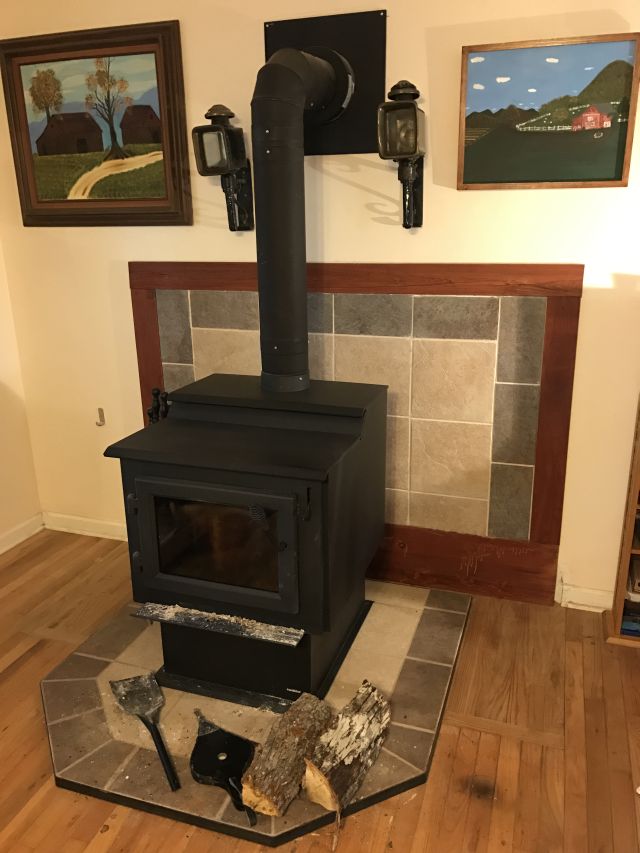I was thinking just a few days ago, when winter abruptly descended, how efficient and useful my wood stove has been. Over the past 3 winters it has lived up to all my expectations and provides sufficient heat for the house except in the evening before retiring when we use supplementary heat to warm the bathroom. Coincidentally, I received an email with some questions on the wood stove (see below):
 Here are some thoughts. But first, if you are interested in the topic do read my posts, parts 1 & 2 titled “wood stove installation” dated March 2, 2014. You can easily locate them by going to the search box and entering “wood stove”. Part 2 ended with a functioning wood stove and gaping hole in the wall. In my post dated July 27, 2014 (also easily located via the search box) I describe how I completed the job and include a picture of the finished product which you can also see in the picture above.
Here are some thoughts. But first, if you are interested in the topic do read my posts, parts 1 & 2 titled “wood stove installation” dated March 2, 2014. You can easily locate them by going to the search box and entering “wood stove”. Part 2 ended with a functioning wood stove and gaping hole in the wall. In my post dated July 27, 2014 (also easily located via the search box) I describe how I completed the job and include a picture of the finished product which you can also see in the picture above.
Fuel
I use wood salvaged from downed trees and my first choice is oak though I will use other hardwoods if necessary. I never use pine for fuel, instead I add it to my contour ditches to decompose and enrich the soil. I have a decent chainsaw and electric chain sharpener (never got the hang of doing it with a file) and I split the wood with a maul wearing eye protection. Splitting is generally easy unless there are knots and then it becomes a challenge and a puzzle to figure the solution. Only once have I had to chainsaw an invincible knot infested log. I generally cut the logs to the length of the firebox. A few inches too long can be accommodated by inserting diagonally. The logs in the picture below were cut in the early days and are too short.

I keep all my firewood under cover. Beats me why neighbors leave theirs uncovered when a tarp would make such a difference.
Smoking
Smoking is when smoke enters the room, usually when I am starting the fire or when I add fuel. Both are easily avoided. Before building the fire I take a single double page of newspaper and twist it as if wringing a towel and I light both ends and place at the back of the firebox in a U position. The flames heat the flue and this will entice the smoke from the fire to go up the flue. And when adding wood you just have to remember to open the door slowly so as n0t to distract the smoke from its journey to the flue.
Lighting
Lighting the fire has not been a challenge. I use a short piece of duraflame quickstart – the packaging says it is “made with wax and a blend of recycled and renewable biomass fibers” and it gets the fire going. If the wood is wet it will “smoke” as it releases moisture. In the beginning when this was a problem I used scraps of 2×4’s (untreated) to augment the firing process. Now all my wood has had time enough to dry. Although not sanctioned by the manual I leave the door slightly ajar (but latched) and this boosts the firing process and when the fire has achieved momentum I lock it down.
My wood stove does not have a blower , though it is available as an option. So to circulate the heat I use the ceiling fan, and it works well enough.
And finally, never place anything on the stove to dry. You turn your back and you have an open fire in the living room! Oh, I forgot, the chimney installer recommended cleaning/sweeping the chimney at least annually – which is not as difficult as with a fabricated fireplace. You just access the chimney from the rear (see my pics in earlier post) and remove the cap at the tee and with rods and a brush snare the soot in a garbage bag. And the wood ash and the soot go into my vegetable growing beds or compost heap.

